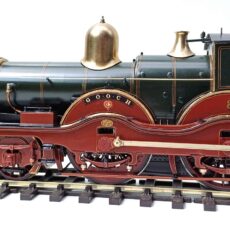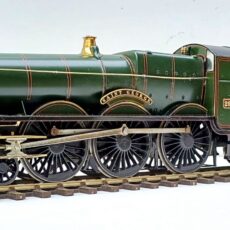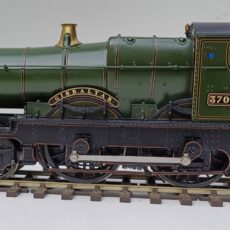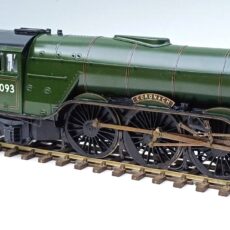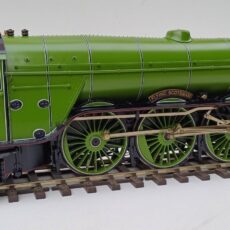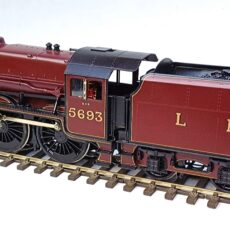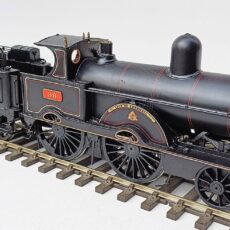
It has now been completed by myself to a smooth running condition, and painted by Warren Haywood. Slightly different to other MOK Armstrong class models on these pages. Notice fenders on the tender sides, not coal rails. Lamp irons, not lamp sockets. Different clack valves. All features as seen on archive photos of the prototype. Driven by a Portescap RG7 motor/gear unit. Unfortunately the crankshaft and connecting rods were missing/lost before I acquired the model, so, although it does have slide bars and crossheads, there is nothing there to drive them.
The descriptive notes above explain why I can afford to offer this lovely model for sale at roughly half the price that I have sold similar models to this of top quality. It is not a perfectly built model. Don’t expect it to negotiate tight curves or to pull heavy loads, but it has been built square and true and is very good value for money for one of these magnificent MOK Armstrong class models.

